Service Information
This section provides information about actual or expected delays of 15 minutes or more for train services.
Service Information
This section provides information about actual or expected delays of 15 minutes or more for train services.
Based upon the idea that "Peace of Mind = Safety + Service" we will provide safe, comfortable and world-class transportation services through our outstanding technological capabilities and innovative thinking.

The planned start and completion dates for these various measures are scheduled to be released together with the announcement of our Medium-Term Business Plan in March, 2019.
In addition to the natural disaster countermeasures prepared thus-far, in response to revisions to standards and estimations of damages based upon the damage caused by natural disasters that have struck Japan in recent years, going forward we will also introduce additional measures. Furthermore, we will improve our emergency systems by conducting various training courses with actual time lines for such scenarios as providing guidance during evacuations. So that our customers can use our services with peace of mind, we will enact various safety measures in terms of both software and hardware, helping support Tokyo's various urban functions.
In addition to the overpasses and other above-ground structures we have been working on previously, we will also perform further reinforcement work on the central pillars in tunnels in order to allow operations to re-commence quickly in the event of an earthquake.
Reinforcement of viaducts
Masonry retaining-wall reinforcement
Rocking column reinforcement
Tunnel central pillar reinforcement
Railway bridge reinforcement
We will advance flooding countermeasures in preparation for large-scale water damage such as from flooding.
Flooding control measures at locations such as entrances/exits to stations, tunnel openings, above ground stations, and substations

Continuing on from the already completed battery maintenance on long-spanning bridge sections, and the installation of batteries on Ginza-line trains, we will push ahead with further measures to ensure power during emergencies, so that even if a train stops between stations, we will still be able to reach the nearest station and ensure passengers are taken to safety.
Installation of emergency batteries on trains
Installation of relief-use power supplies for powering trains at substations
We aim to reduce the time it takes to resume services and minimize the damage to subway facilities in the event of a natural disaster. We will expand the provision of information during emergencies so that we can guide passengers safely, appropriately and in a timely fashion to safety.
Performing emergency-response training
Expansion of timelines (disaster-prevention action plan)
Expand the provision of information in multiple languages on trains and in stations
Deployment and management of supplies
Our goal is zero accidents on station platforms, which we aim to achieve by preventing incidents of people falling from station platforms and minor collisions with trains.
We are aiming to complete the installation of platform doors in all stations on all lines by FY2025.
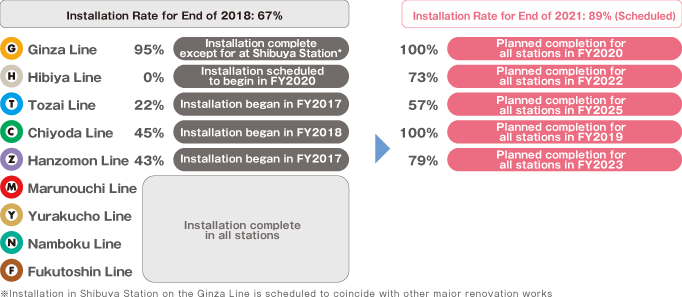
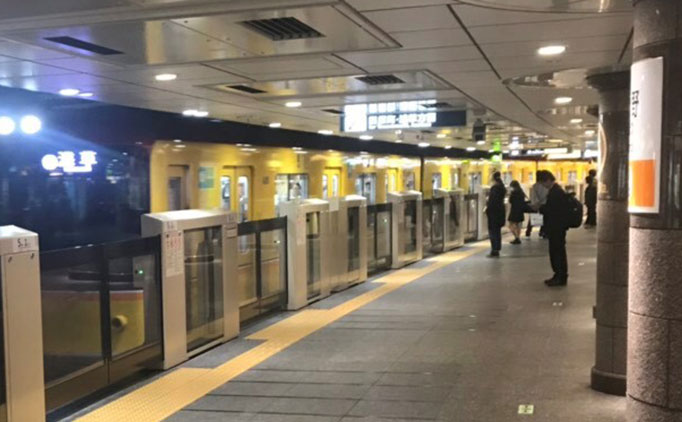
We will improve safety on platforms both in terms of software and hardware so that all passengers may use our services with peace of mind.
Improvements to station staff awareness
Link emergency stop buttons with signal systems
Implement campaigns for station staff to greet and support passengers
Allocate staff and security guards as appropriate
Speedy sharing of information between station staff through use of headsets
All station staff obtain service care-giver certification
Perform training exercises for barrier-free related services and access
Host a range of educational activities with which to build a culture in which station staff proactively look-out for potential issues for passengers with disabilities
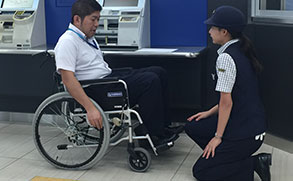
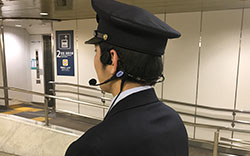
We will introduce new trains on five lines within the period FY2019 to FY2021.
In addition to improving safety through proactive introduction of new technologies, this will also improve passenger comfort within the trains and help improve our energy-efficiency credentials.
The upgraded performance of the air-conditioning equipment will provide a more pleasant environment within our trains.
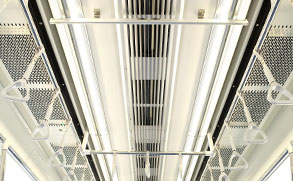
An increase to the width of the seating within the trains will improve passenger comfort.
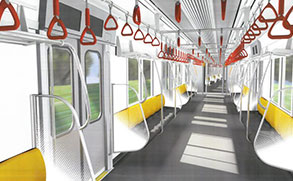
Adding more freely usable space within all our trains will help ensure barrier-free access.
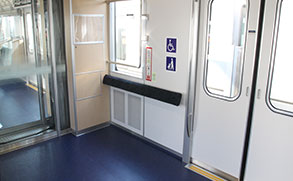
The introduction of security cameras within trains will improve passenger safety.

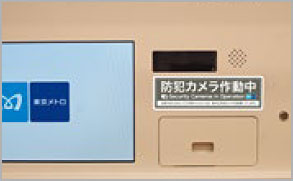
We are aiming to reduce power-consumption by implementing LED lighting throughout our trains and highly energy-efficient control systems with permanent-magnet synchronous motors (PMSM) and full SiC (silicon carbide) power modules.
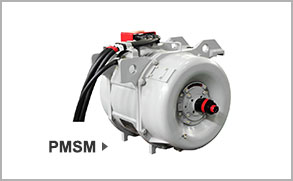
By changing to Ethernet (to expand our transmission capacity) and to wireless transmissions (for transmitting information between above-ground facilities and trains), we are aiming for use of CBM (condition-based maintenance) for such things as early recovery in the event of an accident or for preventing train accidents from occurring.
The installation of devices that detect derailments and automatically stop the train in response to this will improve passenger safety.
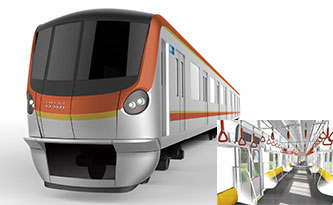
Yurakucho Line/Fukutoshin Line - 17000 Series
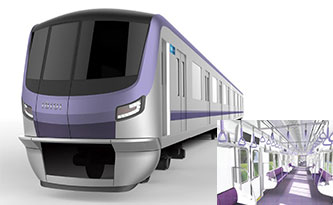
Hanzomon Line - 18000 Series
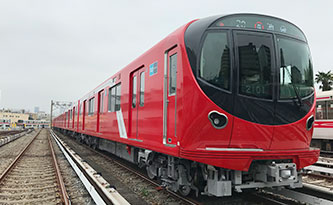
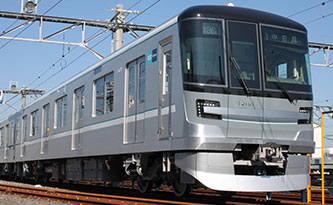
Ahead of upcoming international events, we plan to further increase security levels for matters such as terrorism and criminal activity.
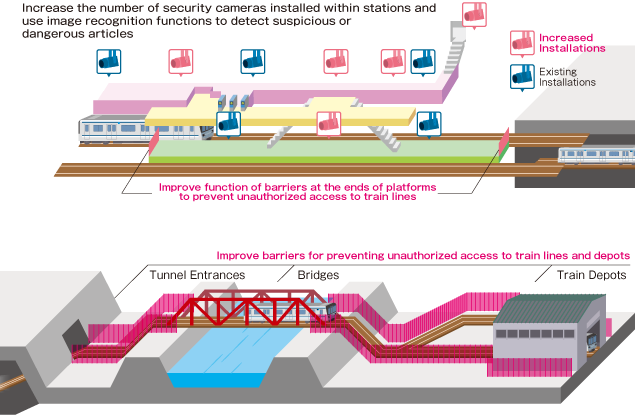

We will proactively introduce new technology and improve other vigilance and security efforts in preparation against terrorist and criminal activities in stations and trains.
Update and increase the number of security cameras in stations
Increase the number of security cameras in trains
Implement further security measures that make use of new technologies
Install software that uses image recognition functionality to detect suspicious or dangerous items.
In order to ensure a secure and stable service, we will make improvements to our security setup at various facilities including measures to prevent trespassing.
Improve functionality of barriers at the ends of platforms to prevent unauthorized access to train lines
Improve barriers for preventing unauthorized access to train lines and depots
We will improve security measures to protect against the threat of cyber terrorism.
We will make further improvements to the security and stability of our railway lines through updates to our facilities and improvements to their functionality, helping maintain the urban functions of the city of Tokyo.
Changing train radio communication to digital wireless space radio
The effects of external noise are reduced and the quality of communications improved, allowing the necessary commands/instructions to be sent to each train, thereby improving the operational stability of train services.
Extending the service life of tunnels
Introduction of CBTC (communications-based train control) systems
Improvements to the monitoring of facilities (CBM: condition based maintenance)
Improvements to transport stability by using a standard voltage of 750 V
All staff obtain life-saving skills certification
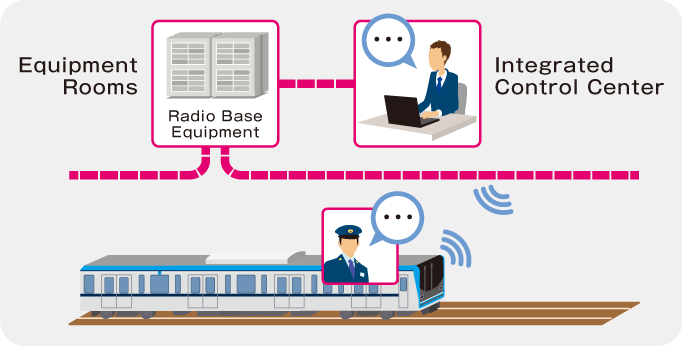
Changing train radio communication to digital wireless space radio
The effects of external noise are reduced and the quality of communications improved, allowing the necessary commands/instructions to be sent to each train, thereby improving the operational stability of train services.

Extending the service life of tunnels
Introduction of CBTC (communications-based train control) systems
Improvements to the monitoring of facilities (CBM: condition based maintenance)
Improvements to transport stability by using a standard voltage of 750 V
All staff obtain life-saving skills certification
As a countermeasure against congestion and delays, we will make large-scale improvements to stations and perform services on our equipment so as to make our facilities more convenient to use by passengers and to improve the stability of our transport services.
On the Tozai Line, where mitigating congestion is a pressing issue, we will steadily implement a number of projects aimed at improving transit performance, totaling around JPY 120 billion, including large-scale improvements to all stations, all with the goal of reducing the congestion rates to less than 180%. Furthermore, we will run an early-bird campaign including such schemes as the introduction of off-peak points in collaboration with "jisa Biz."

Click here for larger image(PDF: 61KB)
We will add one platform and one track to make a total of two platforms with three tracks. This will make it possible for trains to alternately arrive and depart from different platforms, thereby helping mitigate congestion, prevent delays in train arrivals/departures and ultimately improve safety and convenience for passengers.

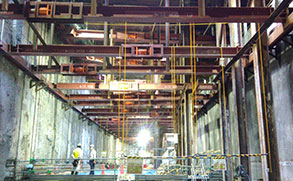
We will make the existing return line a main line and remove any obstacles on the crossover section, making it possible to increase the number of trains in the future by running return trains and the train following it up behind at the same time.

We will extend the length of platforms so as to disperse the flow of passengers, allowing for smoother transfers to the Hibiya Line.


We will widen the platform and concourse so as to disperse the flow of passengers and ease crowding.


Collaboration with "jisa Biz" (flexiblle work hours)
Awarding of Metro Point Club* off-peak points
"Metro Point Club"※: those who commute at off-peak hours are awarded points
Initiatives for Commuting to Work and School at Off-Peak Hours
Aside from work on the Tōzai Line, we will also proceed with other large-scale improvements on all other lines, as well as making increases to the number of trains, so as to eliminate delays from our service and to ensure a comfortable travel experience for all our passengers.
Furthermore, continuing on from the Chiyoda, Yurakucho and Fukutoshin lines, we will also be introducing a new paid-seating service on the Hibiya Line.
Install a return line at Asakusa Station
We will install a return line at Asakusa Station in order to prevent delays and increase the number of trains in service between Ueno and Asakusa stations on the Ginza Line.
Begin operation of six-car trains between Ikebukuro and Honancho stations by lengthening the platform at Honancho Station
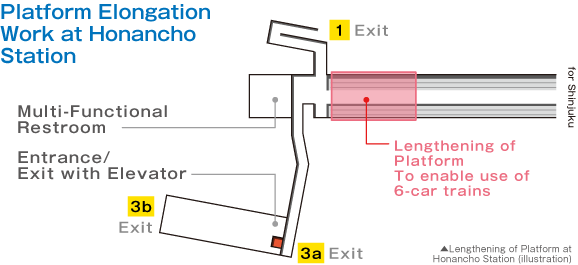

Preparation for introduction of CBTC (communications-based train control) systems
Introduction of reserved seating service
We will introduce a new reserved seating service on some trains with through service to Tobu lines.
More trains between Kasumigaseki and Naka-Meguro Stations during morning and evening hours
Preparation for introduction of CBTC (communications-based train control) systems
Preparation for introduction of CBTC (communications-based train control) systems
Additional fare gates, etc. being installed at Toys Station to reduce congestion
Increase the number of trains during evening and night-time hours
Five-minute headway during midday hours
Measures to mitigate congestion at Iidabashi Station
Additional entrances/exits and fare gates are being installed to accommodate the location change of JR Line platforms and alleviate congestion.
Increase the number of trains during early-morning and morning rush-hour
Implement eight-car trains to alleviate congestion
The current six-car trains will be gradually converted to eight-car trains, and in tandem with this, we will proceed with refurbishments to station facilities in order to accommodate this change.
Measure to mitigate congestion at Iidabashi Station
Additional entrances/exits and fare gates are being installed to accommodate the location change of JR Line platforms and alleviate congestion.
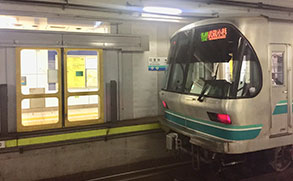
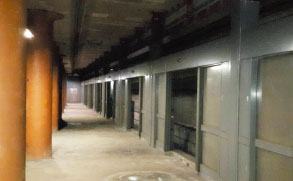
Measures to mitigate congestion at Iidabashi Station
Additional entrances/exits and fare gates are being installed to accommodate the location change of JR Line platforms and alleviate congestion.
We will introduce a CBTC system as our latest signaling system--the first to ever be used on a Japanese metro system. Using wireless communications will allow us to reduce the intervals between trains even further. This will improve the stability of our services by enabling us to recover quickly in the event of delays, etc.

Increasing the appeal of using our services during off-peak hours will enable us to disperse crowds during rush-hours.
"Metro Point Club": those who commute at off-peak hours are awarded points
Points will be awarded to passengers who use our services before and after peak hours at crowded stations such as Toys Station or others on the Tozai Line.
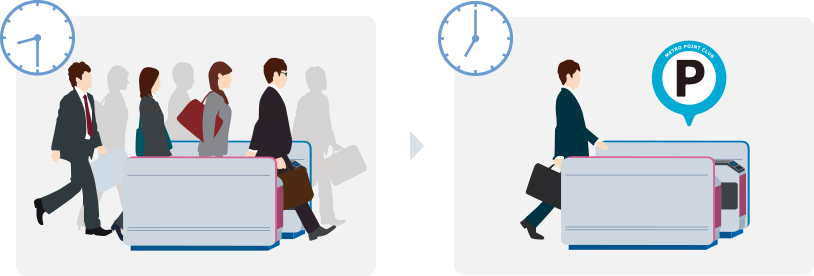
Efforts to visualize levels of congestion
Occupancy rates for each train transmitted wirelessly, allowing us to quickly ascertain congestion levels and transmit the relevant information to passengers.
Collaboration with "jisa Biz" (flexiblle work hours)


We will continue to actively promote the introduction of barrier-free facilities so that the elderly and people with disabilities are able to safely and easily use our services.
At least one elevator accessible route
Multiple elevator accessible routes
Elevator accessible transfer routes
Multi-functional restrooms installed at all stations
Reduction of level differences and gaps between platforms and trains
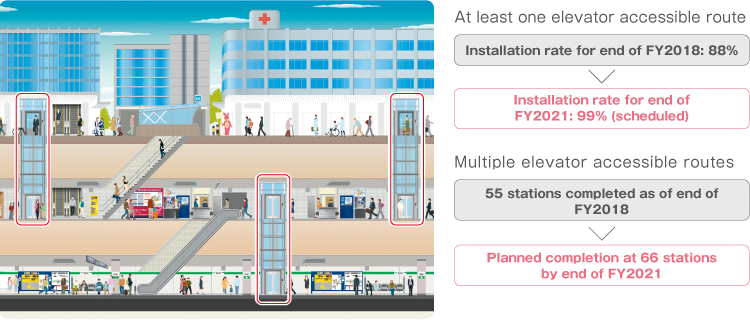
As well as proactively promoting improvements to the comfort levels within our stations, we are also aiming to make improvements to passenger convenience through such measures as the provision of information and guidance, including to visitors from abroad and during irregular situations.
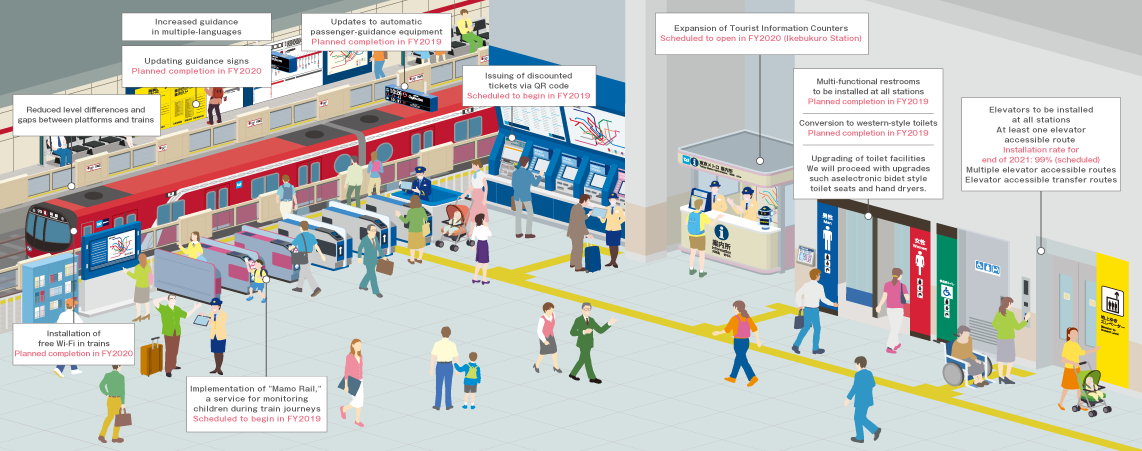
Click here for larger image(PDF: 458KB)
QR Code is a registered trademark of DENSO WAVE Incorporated.
We will install a guidance system that can be used easily by all passengers, including visitors from abroad and those unaccustomed to rail travel.
Expansion of Tourist Information Counters
Ikebukuro Station
In addition to Ueno Station, Ginza Station, Shinjuku Station, Omote-sando Station, Tokyo Station and Shibuya Station (operated jointly with the Tokyu Corporation), it will be the seventh location
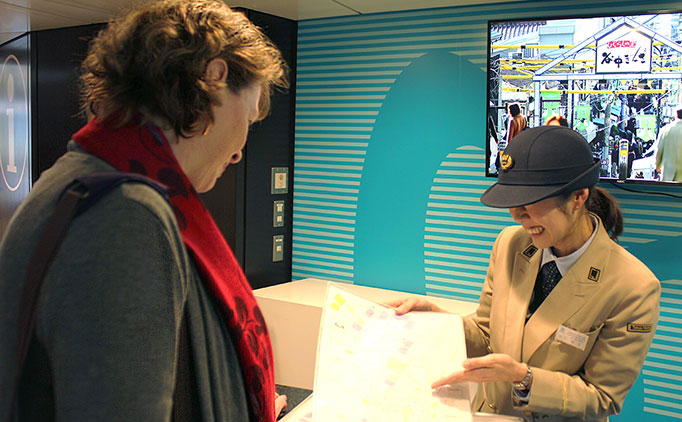
We will set up new transfer stations in order to improve convenience for passengers on the network.
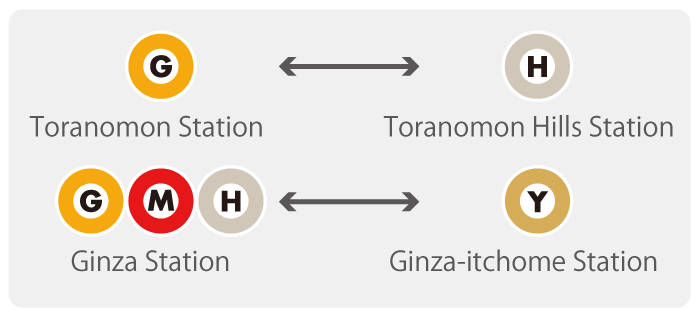
Through measures that utilize point collecting services, QR codes or smartphone apps, we will develop a range of services that help enrich the everyday lives of our passengers, focusing mainly on the use of trains as a means of transport.
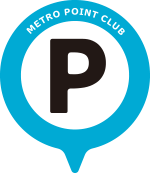
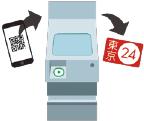
Implementation of "Mamo Rail," a service for monitoring children during train journeys Implementation of "Mamo Rail," a service for monitoring children during train journeys
While still placing great importance on the history as the first underground railway in East Asia connecting the city of Tokyo, we are aiming to firmly establish an image of our routes being ones that incorporate and introduce advanced technologies as station renovations continue under the design concept of "Fusion of Tradition × Cutting Edge."
Nihombashi Station renovations
Kyobashi Station renovations
Ginza Station renovations
Aoyama-itchōme Station renovations
Gaiemmae Station renovations
Shibuya Station Relocation
With the cooperation of the Tokyo Metropolitan Bureau of Transportation, we will proactively promote the integration of both of Tokyo's subway services.
Introduction of ticket vending machines for tourists and visitors developed jointly by both subway operators
Improvements to transfers at Kudanshita Station
We will install fare gates for use on three lines, and add elevators for making transfers.
Implementation of "Mamo Rail," a service for monitoring children during train journeys
Whenever a child passes through a fare gate using a pre-registered IC card, a service which sends emails to the child's guardians informing them of such movements will be implemented at stations operated by three providers, including the JR East Japan Railway Company.
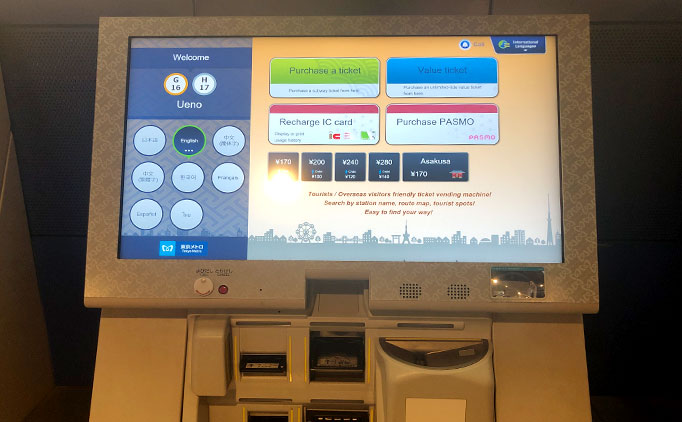
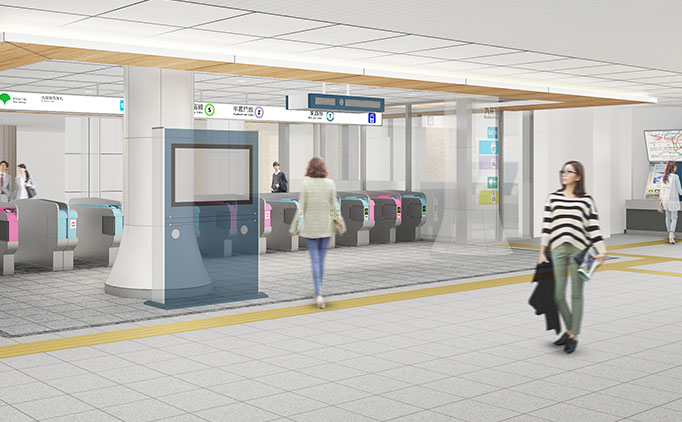
Introduction of ticket vending machines for tourists and visitors developed jointly by both subway operators

Improvements to transfers at Kudanshita Station
We will install fare gates for use on three lines, and add elevators for making transfers.

Implementation of "Mamo Rail," a service for monitoring children during train journeys
Whenever a child passes through a fare gate using a pre-registered IC card, a service which sends emails to the child's guardians informing them of such movements will be implemented at stations operated by three providers, including the JR East Japan Railway Company.